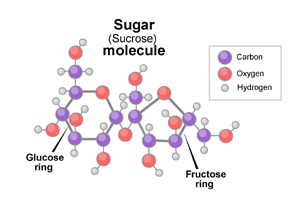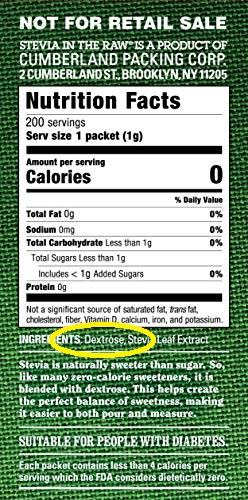Some of you will remember Jackie Gleason the actor and comedian, many of you will not. He’s part of this posting for two reasons, his famous line “How Sweet It Is!” after drinking a little from the cup of “coffee” he would be given shortly after getting out on stage, and because — at that time (the 60’s and such) — he was also famous for being “incredibly overweight.” (I’m not sure the term “morbidly obese” had been invented yet.)

Autographed photo of Mr. Gleason, with his signature slogan at the top: “How sweet it is!”
By “modern standards” in America at least, he scarcely looks overweight at all, any more.
Jackie Gleason was a great actor and a good comedian. Possibly a genius. Personally, I preferred his serious acting to his comedy, but that’s me. I particularly liked him in The Hustler as Minnesota Fats (an iconic-in-his-own-life-time professional pool player), and in Gigot, where he played a deaf-mute and did it outrageously well, possibly his best performance. Most people will remember him for the Honeymooners” — which was the inspiration for the Flintstones, by the way (and the Flintstones spun off the Jetsons, so… ripple, ripple, ripple, you might say).

Jackie Gleason as Minnesota Fats, playing opposite Paul Newman in the great movie “The Hustler” He’s supposed to be almost grotesquely overweight to the audience. At the time, he was.
Ok, so that ought to set the scene for what will be a very difficult posting for some of you. I suspect a lot of you won’t even read it all the way through once you figure out what I’m really about to dive into (yes: that’s a challenge).
Sugar. Sweet. Sweeteners. Bad. Really. Sugar substitutes are just ways for you to keep getting the “sweet” even though your are clear enough on how bad sugar is that you have switched to the substitutes! That’s addiction, and all addiction leads to both health and sanity issues, privately, publicly, and among the Herd at large (i.e., socially).

Yes, it actually says “max occupancy 10 people or 3 Americans.” Is that embarrassing enough yet?
Definition: Obesity — “Obesity is a medical condition in which excess body fat has accumulated to an extent that it may have a negative effect on health.”
“Negative effect on health” is the only reason I bring this up. I am not concerned with fashion, with appearance, with stereotypes, with anything except individual Health and, subsequently, Quality of Life (QOL).
Was a time in America when people fretted seriously about being 5 pounds “over weight.” At 10 pounds over weight your doctor might give you a serious talking-to and prescribe a specific diet until your weight was brought “under control” again. A child in grade school 20 pounds over weight would probably have had his home life investigated and his parents might have been brought up on child abuse charges. I’m not making it up; that was in my life time.
My, how things have changed.
Instead of “the President’s Council on Physical Fitness,” instead of commercials encouraging folks to get out and take a walk, instead of your doctor talking sternly to you over 10 pounds of “over weight,” instead of all that and more, America now rakes #12 of the most Obese nations on the planet, that’s out of 191. By total population, rather than by percentage of population, America is the most obese nation on the planet.
I’m not talking about how to solve a dire national crisis, nor how to reduce health care costs on a national level, nor sanity in the food supply nor general education level about how bodies work, nor about any beliefs about how much you can control your own health — though all of those are quite valid concepts. No, here, I’m just pushing some data and some facts related to QOL (Quality of Life). Your QOL.
By the way: “data” that I offer comes without any agenda. I am offering no products for sale. I make no money here. I am offering no “ancient secrets just rediscovered,” nothing that “NASA tried to keep from you,” and no “take this tonight and be 20 pounds skinnier tomorrow.” That’s all Snake Oil from Flimflam artists, trying to conn you out of a buck. Notice: there are no ads on my website. I don’t anticipate there ever will be.
Moving on. (Caution: this is a long posting… it’s a complex subject and this posting, in spite of being “long” just barely scratches the surface. [What makes it complex, actually, is the huge amount of fake and false information out there about all this])
In preparing for this posting I visited a great many “addiction” websites and was only a little surprised to find that NOT A SINGLE ONE mentioned sugar addiction at all, let alone as the overall most common (and popular) addiction world wide. Not a single one. However, Sugar is the number on addiction on the planet. Certainly the number one addiction in America, and — from the perspective of total number of people at risk — the single most damaging, deadly and expensive addiction.
I’ll go it one step further: it’s not Sugar that is the
addiction but rather “Sweet,” the taste of sweet itself.
I had a small bout with Sweet myself. It snuck up on me, in spite of “all my knowledge.” (Do we ever really know all that know?) I run a small shop and there’s a Candy Jar on the front counter. For the customers, right? (Yeah, right.) It was very handy, and several times a day a small piece of candy disappeared from there when no customers were looking. In short order I was actually craving a “sweet” after every meal, and my weight was going up.
I stopped it cold when I realized what was happening, though the craving asserted itself for several days, eventually slowing down, then going away. Headaches stopped, weight reversed, “short temper” and general irritation level (over everything) reduced, and my eye sight improved. That was just from a few weeks indulgence. Sugar. Nasty. Insidious. Sneaky.
Almost I pulled the Candy Jar from the shop, but my clients appreciate the Treat. Notice, I say treat. When it’s a treat it’s ok. The healthy human body can tolerate almost any of the many “food-like products” we have available these days without a problem, when it’s occasional, rare, or a Treat(1). Also, it’s not my job to be Hallway Monitor over other folks’ Health. The candy jar is there as a Fun Thing, and even those who don’t partake tend to notice it and add a smile to their faces.

Moving on… There’s a funny thing in food labels, at least in America. A food-like product package might say “sugar free” some where in bold, enticing, colorful lettering and yet the ingredients (in low contrast, tiny, tiny print — unreadable to those who most need to read and understand it, in other words) might list things such as “glucose,” “lactose,” “fructose,” “dextrose” or any of a number of -ose’s. Those are all sugar, folks!

Oops. Not the sort of Candy Jar I was meaning.
The difference is the source. Fructose is generally from Fruit. Lactose from milk, where “sucrose” (table sugar) comes from (oddly enough) Sugar Cane and/or Sweet Potatoes. They all have slightly different effects on the body, but ultimately they all do what “Sugar” does. So what’s with the FDA’s fancy food labels, which are supposed to be consumer friendly and health-affirming? (See below for an example of a nearly unreadable label.)
Well, when they say “sugar free” they generally mean no Sucrose, which is the technical name for what is commonly found in sugar bowls and in the little packets in restaurants: “table sugar” in other words. So they are being deliberately misleading, actually (the same way Apple is misleading when they say “we don’t get viruses:” true from the technical definition of a computer virus, but utterly false from the common understanding of the word. Seems deliberately misleading, doesn’t it?)

In nature, sugar is not “of value” in itself, but is a trigger to the consumer of the what-ever that there is ALSO food value here. When we (humans) refine sugar (take away the food value) we are creating something that just isn’t found in nature: pure sugar. Like refined opium, it’s a poison and a really, really bad idea.
In general, anything in the ingredients list that ends in “-ose” is (usually) a sugar (it’s a chemistry thing). Very simple, but not complete; let’s continue.

Ingredients list on a package of “Stevia” sweetener. The first ingredient is dextrose, for Pete’s sake and not Stevia at all. They justify its admixture with pleasing rhetoric, but it’s really there for low cost and ease of manufacture, not for your convenience at all. An actual Stevia plant would do you much better. They live well indoors, but keep it away from your pets! They’ll eat it up. 🙂
Dextrose (-ose, see?), Aspartame(2), Stevia(3), and other “sugar substitutes:” none of these are considered “sugar” officially. All of them are meant to “satisfy the sugar craving” and in fact they do that, sort of, except that it won’t stay satisfied, of course. What I have not found any studies on and would really like to see are what neurological effects “sweet” as a taste has on the body and the metabolism as opposed to actual sucrose ingestion. (Actually, Chinese medicine already knows the answer to that question; I was hoping some one in the Western Medical or Bio-neurological world would add some laboratory facts to the discussion.)
A bit like an alcoholic drinking alcohol-free beer, when much of the time the alcoholic’s addiction is to the sugar in alcoholic drinks as much as to the alcohol. Not to mention the yeast and the carbonation in any beer which are also quite destructive (and habit forming) on the body over the long term(4).
There was a movement some years back to require beers to publish their ingredients and nutritional value(s) on their bottles and cans. It was defeated, unfortunately. I guarantee that for the common variety, cheap American beer, you don’t want to know its “nutritional value.” Just the number of empty calories in a single can would shock you silly. (Maybe, and maybe you’d reach for another one instead. If so, hang on to that thought — I’ll get to you shortly.)
Okay, this has gotten long, if you’ve gotten this far, but bear with me. Here’s the kicker, really. If you’re working with sugar substitutes in your diet, then you are trying to take control of your diet and health. Excellent on you! However, the only way to take control of your health is to actually take control of your health. There are no workable short-cuts. There are no products on the market that will do that for you. You *must* stop feeding your cravings, just note them and regard them as sign posts for possible (probably) allergies and other negative reactions your body is having to those substances. For example, crave bread, do you? Almost certainly you need to get off and stay off all forms of wheat. Crave sugar? Well… you can figure that one yourself now, yes? Get off sugar, get off sweet in general(5).
Continuing to ingest sweet in any form is continuing to maintain the addiction. Addiction means your body/mind system is out of balance.
However, it can be tough to stop all forms of sweet. You’ll find that the typical grocery store doesn’t help, either(6). Remove processed wheat, sugar and starches from your diet and more than half of the grocery store just became useless to you. As it is anyway, from the point of view of real health.
Sugar (table sugar, sucrose) is a poison. It will kill you in sufficient quantities(7). This is a fact. Long term ingestion of sugar without the naturally occurring food value along with it leads to serious health issues. For example, a strawberry is very sweet all by itself, but also has food value (when properly grown) which offsets the negative of the natural sweet — just don’t dip it in the sugar bowl; that’s insulting the strawberry, actually, as well as a totally barbarous act 🙂
What is not known to Western Medicine is whether “sweet” (the taste) in itself has any health effects or not (excluding the known side-effects of many sugar substitutes). I am speculating that to actually cure/remove a sugar or sweet craving, to get back control of your body and mind in other words, you must avoid all sweet, even the sugar substitutes. That would be the same for any craving, be it a “food,” “activity,” or whatever. Basic Addition 101, you might call that. In time, balance will be restored and you can go from there. (I have more limited data here, because I’ve never used a sugar substitute in my life, for any reason; so I have no experiential data to draw from there.)
Another serious problem with sugar is that it’s every where. Breads have sugar added to them. Crackers. Ice cream, of course. People add sugar to their coffee. One can of coke has 7 tablespoons of sugar in it. Ready made spaghetti sauce, way too sweet for my taste (I make my own, as taught by my Sicilian grandmother). Jellies and Jams. Canned chili. Milk is already sweet (lactose, dig?). Pizza has sugar in most of its ingredients. Salami. Packaged anything. Muffin mixes. Everything the bakery bakes. Sugar, sugar, sugar. Sugar is cheap for the manufacturers, cheaper than real ingredients, and often masks that the product has no or very little actual flavor in itself, because the ingredients just aren’t very high quality, really. Throw in sugar (and salt) and the average consumer (especially Americans) won’t know the difference. So what if his health suffers? The government says it’s ok, so it must be ok.
Pfui!
I am health oriented, not indulgence oriented. (Wasn’t always true; I had to educate myself and then I had to learn discipline as well.) Indulgence is fun, once in a while. To me, food is fuel and raw materials for the body I live in. So far, medical science is unable to replace my body if I wear it out before its time. So it remains up to me to keep it in top shape. That’s called, by the way, Quality of Life. (Well… ok, it’s not “called” that; but certainly it leads to improved QOL, yes?)

The eating disorder twins.
Nasty messages for our children.
Sort of a side note, I want to make a comment on “Plus Size Barbie.” Ok, the original Barbie Doll certainly doled some serious mental abuse on a couple generations of kids. It showed an adult woman in proportions that would be seriously unhealthy if even possible, and this was held out as “what all little girls should grow up to be.” I’m referring to the proportions and the implied level of health thereby, not to any irrelevancies like hair or skin color, though those were unfortunately part of the message also. Now comes the “Plus Size Barbie” which is surely at least as psychically destructive as the other one. Too Skinny Barbie encourages the belief that looking like that is Good, and thus leads to anorexia, bulimia and other eating disorders, since looking like that is impossible without severe starvation tactics. The so-called (and nastily named) “Plus Size Barbie” surely leads to the idea that being morbidly obese is Ok, even normal, and even further suggests it’s a thing no one can help. (Reprehensible lie, that is — except in quite rare instances). Also possibly possibly suggests this is what an adult should look like and thus encourage over eating! Alright, being “heavy” needs to not be “wrong” before one can get control over it; Absolutely! (If a thing is “wrong” and stays “morally or ethically wrong” one will never gain control over it — another posting for another day.) On the other hand, here we have two Barbie dolls, I suppose handed out to children every day, and neither one shows what an actual Healthy Adult looks like. Astonishing, and sad beyond words. And an awful commentary on the level of awareness of what “healthy” even looks like, let alone with it really is. Also a sad comment on adult awareness of how vulnerable to “programming” youngsters are.
Then there’re the high heals, extended wear of which will weaken anyone’s lower back, and the psychological (weakening, again) effects of that much pink, but I won’t mention that in this posting; it’s beside the basic theme. Right?
Horrible programming for a young generation.
Ok… that’s pretty much it for this one, except to say:
I am not a doctor; your mileage may vary, if it hasn’t already. Sugar is sweet, and sweet is good. Dip your strawberries in the sugar jar. One to two hundred pounds overweight hardly shows and being short of breath after climbing one flight of stairs isn’t a problem because there’s an elevator just down the hallway. I am not suggesting or recommending anything, except my belief that all problems have solutions if we choose to employ them, choose to live a specific way.
Or we don’t choose and thereby take the default route through life, like the rest of the Herd.

Boy, try saying “sheep shearing chute” 10 times real fast!
In our culture, at this time, almost all important and lasting choices are made through simple complacency: the no-choice choice, which sets you up for a nice “shearing,” doesn’t it?
[30]
(1) Dog Treats have always struck me as a contradiction in terms. A Treat is by definition something that happens rarely, thus making it a Treat. But dogs tend to get “Treats” several times a day. So do dolphins in training and during their acts, but for them it’s not sugar but fish. Oh well… (Does any body even know what’s in a Dog Treat? My skin crawls even considering the question!)
(2) Aspartame (aka “NutraSweet,” and other brand names) — no “-ose” because it’s not a sugar. It’s a slow poison, actually — see the post MSG, Food Allergies, Misdiagnoses, etc for a little more on that. You can also look up “aspartic acid poisoning,” “phenylalanine sensitivity” and “methyl alcohol” on the internet. And, again, I am NOT a doctor nor a nutritionist, and such folks may disagree with me on this material. I have known doctors, however, who were in total agreement on all of it (one of whom even gave me the phrase “aspartic acid poisoning”). By the way, one of the documented side-effects of Aspartame is Type 2 Diabetes, and another one is “anomalous weight gain,” not to mention migraines, blurring vision, ringing in the ears (tinnitus) and about 50 other symptoms. Doesn’t happen to everyone, though, one or more of those many symptoms. You can find the side-effects of any “food-like product” on the internet. Such knowledge will help you to better gauge a product’s effects for yourself. No one can do that for you; every human body is unique and only you live in yours. (Unless you rent out space?)
 (3) Stevia is a plant that tastes outrageously sweet. 500 times sweeter than table sugar (sucrose). It’s actually too sweet for most people in any quantity at all. A tiny sliver of a leaf dropped in your hot coffee will sweeten it up marvelously. (If you like sweet coffee, that is.) It is also known to help stabilize blood sugar levels over extended periods of time, and there are studies suggesting that long term use of Stevia may reverse diabetes. (I am not suggesting that; just reporting.) However, what passes for “Stevia” on the open market, especially as a prepackaged “sweetener” is so diluted with other things that any positive health effects are most certainly lost. For example, pick up a package of Stevia “sweetener” at the grocery store and look at the ingredients list. You will almost certainly see the first ingredient is actually dextrose, a sugar! Like picking up a box of “black cherry tea” and finding that it’s actually Hibiscus tea (which some folks react badly to!) with a small admixture of black cherry. Bait and Switch that used to be called. Reprehensible I still call it.
(3) Stevia is a plant that tastes outrageously sweet. 500 times sweeter than table sugar (sucrose). It’s actually too sweet for most people in any quantity at all. A tiny sliver of a leaf dropped in your hot coffee will sweeten it up marvelously. (If you like sweet coffee, that is.) It is also known to help stabilize blood sugar levels over extended periods of time, and there are studies suggesting that long term use of Stevia may reverse diabetes. (I am not suggesting that; just reporting.) However, what passes for “Stevia” on the open market, especially as a prepackaged “sweetener” is so diluted with other things that any positive health effects are most certainly lost. For example, pick up a package of Stevia “sweetener” at the grocery store and look at the ingredients list. You will almost certainly see the first ingredient is actually dextrose, a sugar! Like picking up a box of “black cherry tea” and finding that it’s actually Hibiscus tea (which some folks react badly to!) with a small admixture of black cherry. Bait and Switch that used to be called. Reprehensible I still call it.
(4) Carbonation, for instance, leaches calcium from the body, among other things, which can lead to anxiety or nervousness, difficulty sleeping, soft bones, etc. Ingestion of the yeasts used especially in cheap beers promotes and feeds other yeasts in the body and that is always bad news, especially for long term health conditions such as CFS, ME, Fibromyalgia and even toe fungus — which is a more serious health issue than most people would believe. (No, I am not a doctor… do your own research.)
(5) Alright, Ok. Craving is a whole ‘nother subject and the thinking about it is divided. But only divided on whether your body/mind can ever become educated enough that you can eventually trust those impulses. Pretty much all experts agree that for the typical person, the things you crave are the things you most should avoid. Some think forever and without question.
(6) Wouldn’t it be nice if grocery stores sold HEALTH instead of catering to all our addictions and cravings? What if their job was to educate, counsel and affirm the maximum health possible by right of proper diet, good food and clean fuel? What if grocery stores wouldn’t be caught dead (so to speak) with nutritionless food-like products on their shelves? I imagine health care costs would plummet in a short time, and general quality of life would improve for a lot of people.
(7) Don’t misunderstand me. Yes, sugar is a poison, but so is Oxygen. Truly. It’s a controlled poison that the body is, at the same time, utterly dependent on. When you cut a finger, for example, and it stings? That’s oxygen from the air getting inside your “space suit” — your skin, that is — and damaging your tissues directly. When you add chlorine to a pool, it’s not the chlorine that kills any tiny odd things swimming in the water, but a chemical reaction from the chlorine that liberates free oxygen in the water, which other things than your cut finger find destructive to the tissues. Sugar is necessary in the body, when the body controls it and when the body manufactures it itself, as in glucose. Nevertheless, sugar is a poison. Keep ingesting large amounts of sugar and the body is no longer in control of its creation and use. that way lies many problems.